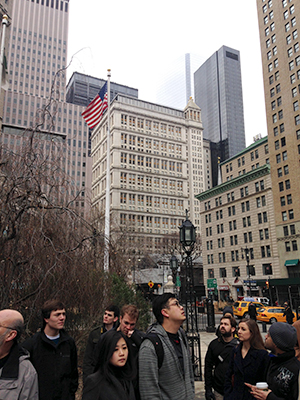Architecture students travel to NYC for spring break

Third year architecture students travelled to New York City for spring break 2014.
April 6, 2014
Third-year architecture students visited New York City from March 19 to March 21 during the university’s spring recess as a part of an education away trip.
“If I went on my own, I would have probably just walked around and looked at galleries, but the professors turned it into a walking lecture where they told us about the history and everything that’s going on, so we got some context for the project as well as a foundation for what we’re going to be learning on our own for the future,” said Randall Hoover, a junior architecture major.
The first two days were walking tour days and Friday was a free day for the students, said Charles Graves, associate professor or architecture and environmental design.
Graves, along with architecture instructor Chris Maurer, accompanied the students and led the walking tours around the city.
“On Wednesday it was a walking lecture,” Hoover said. “We started down in lower Manhattan by Battery Park and walked up through Chinatown.”
On Wednesday night, the students viewed presentations from working architecture professionals, including one from the creator behind “CLOG,” an architecture publication.
“The lecturer from ‘CLOG’ was my favorite part of the whole trip because I hadn’t even heard of it before, and it was kind of an introduction to this great magazine and he told us basically what goes on behind the scenes—the design process behind it,” Hoover said.
During the walking lectures, the students were able to learn about the history of the city’s architecture and the distinction between new and old buildings.
The trip was an opportunity for students in Graves’ class to examine a real parking deck façade they will be redesigning as a final project for their third-year studio course, Hoover said.
“We got to walk by it when we were there and get a scale of it, so we just examined in greater detail what’s around it,” Hoover said. “We’re going really in-depth on what kind of materials the façade is going to be made of.”
The students are only thinking up hypothetical designs for the structure. Their work will not lead to any real changes to the façade.
Contact Justin Sheil at [email protected].
























